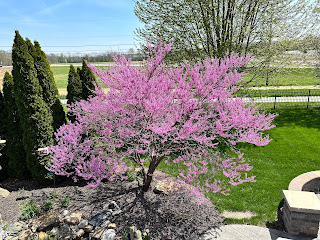Purple Deadnettle as a Dried Herb for Tea or Other Culinary Uses
Purple deadnettle (Lamium purpureum) is an early season "weed." For more information on how to identify and use this edible weed, read my article about identifying, harvesting, and using this weed.
With grocery store costs high, purple deadnettle can be used to bulk up your salads, sauteed foods, and smoothies. Additionally, because it is rich in vitamins and antioxidants, it can be steeped with other herbs to make an excellent tea (actually, it's a tislane, but not many people know that term!)
Purple deadnettle, while in the mint family, has more of a grassy, spinach-like flavor. You can use your imagination on what to pair it with, but given its health properties, I think a lemongrass, ginger, deadnettle tea sounds pretty perfect.
As you can with the other herbal ingredients, you can use your deadnettle fresh from the yard to make your tea. Simply load the ingredients into a pot of water, bring to a boil (only for a moment!), turn off the water and let the leaves sit in the liquid until you have your desired concentration. This is a great way to make herbal tea during the growing season, but what about after the season is over? This is where a dehydrator comes into play!
I have and use the Hamilton Beach Food Dehydrator. It has worked for so many purposes, and this was no different. I have found it to be extremely affordable, and it has allowed me to keep so many foods so much longer than I would have otherwise.
(As an Amazon Associate, I earn from qualifying purchases. I get commissions for purchases made through links in this post.)
Back to the main topic, if you want to use purple deadnettle as a culinary herb or for herbal tea in the off-season, using a dehydrator is your best bet!
To use a dehydrator to dry purple deadnettle, follow these steps:
- Gather the purple deadnettle leaves. Make sure to pick them when they are fresh and free of any dirt or debris.
- Wash the leaves thoroughly in cold water.
- Pat the leaves dry with a paper towel.
- Arrange the leaves in a single layer on the dehydrator trays.
- Set the dehydrator to 105 degrees Fahrenheit.
- Dry the leaves for 6-8 hours, or until they are brittle and crumbly.
- Once the leaves are dry, store them in an airtight container in a cool, dark place.
Here are some tips for drying purple deadnettle in a dehydrator:
- Use the freshest leaves possible. The older the leaves, the more time they will take to dry.
- Wash the leaves thoroughly to remove any dirt or debris.
- Pat the leaves dry with a paper towel before placing them on the dehydrator trays.
- Arrange the leaves in a single layer on the dehydrator trays. This will help them to dry evenly.
- Set the dehydrator to 105 degrees Fahrenheit. This is the ideal temperature for drying delicate herbs like purple deadnettle.
- Dry the leaves for 6-8 hours, or until they are brittle and crumbly.
- Once the leaves are dry, store them in an airtight container in a cool, dark place. This will help to preserve their flavor and nutrients.
Enjoy your dried purple deadnettle! Use them in your favorite herbal teas and recipes all year long. Note that purple deadnettle can have a laxative effect, so it is not recommended to ingest large doses until you know how your body will react.
General information on harvesting and using "weeds."
When foraging for edible weeds, it is important to be sure that you are identifying the plants correctly. Some plants can be poisonous, so it is always best to err on the side of caution. If you are unsure about whether a plant is edible, it is best to leave it alone.
Collect from familiar areas, where pesticides are not used. Do not collect plants from roadsides. You do not know what, if any, chemicals have been used - not to mention runoff chemicals from the road.
Many edible weeds have medicinal properties as well. The properties could interact poorly with certain medications or health conditions. Consult with your healthcare professional.
This blog is for informational purposes only and does not constitute medical advice. The information on this blog is not intended to diagnose, treat, cure, or prevent any disease. Always consult with a doctor before making any changes to your diet or lifestyle.
The author of this blog is not responsible for any damages or losses that may occur as a result of following the information on this blog. Do your due diligence when researching edible and medicinal plants.





Comments
Post a Comment